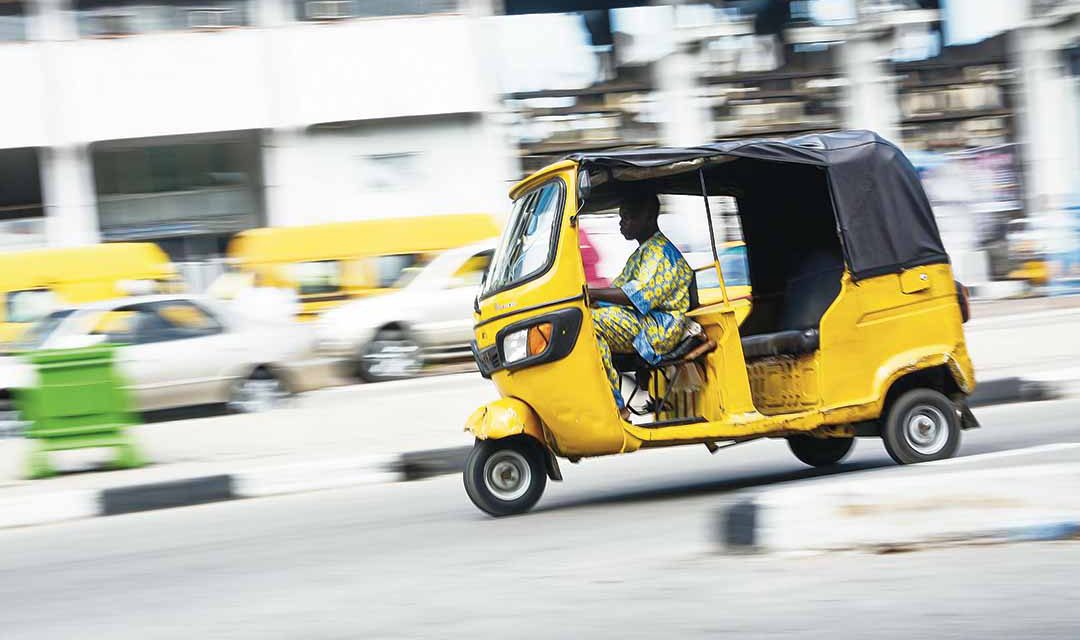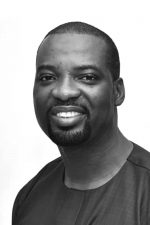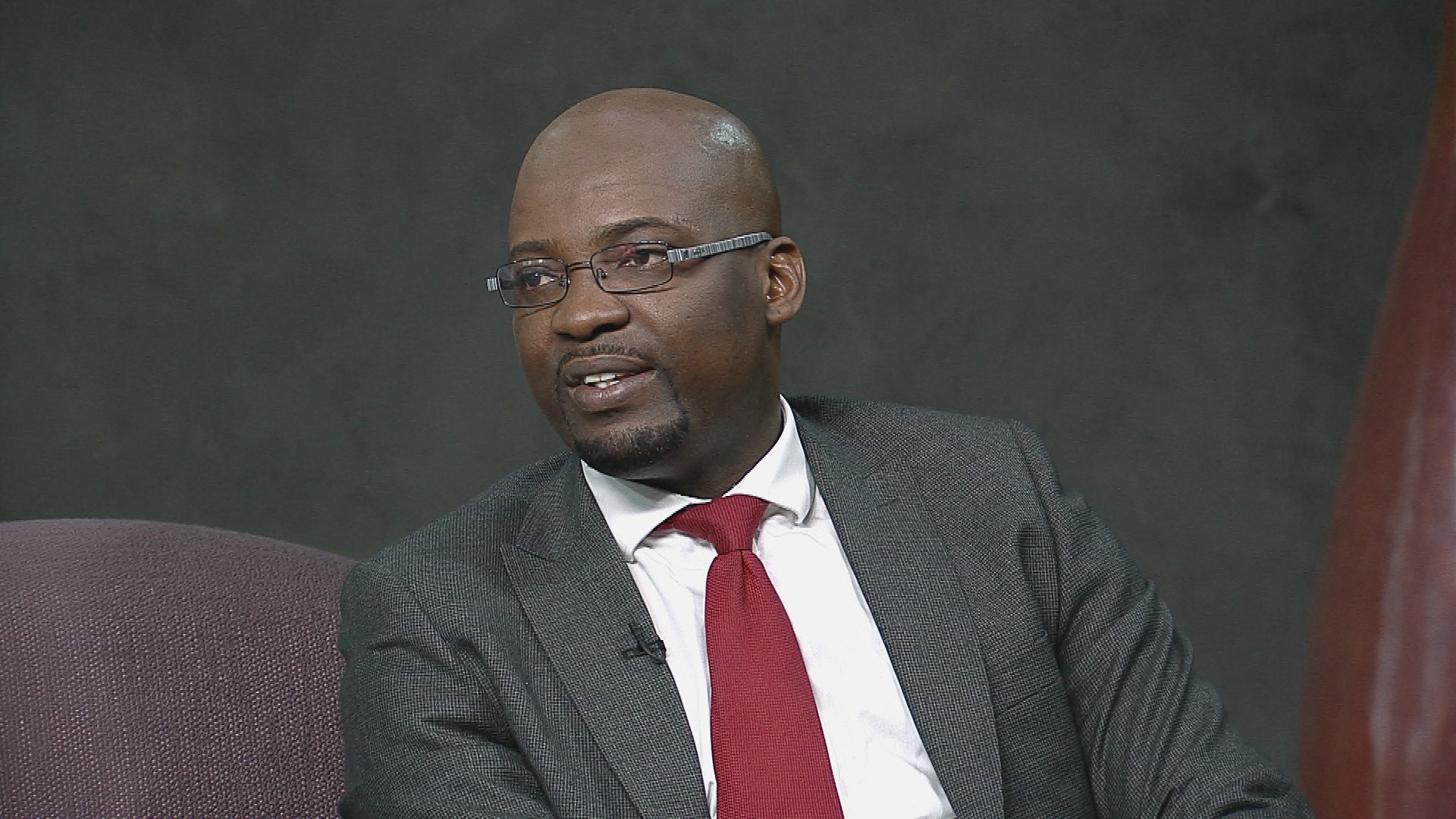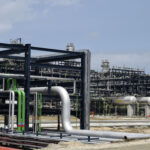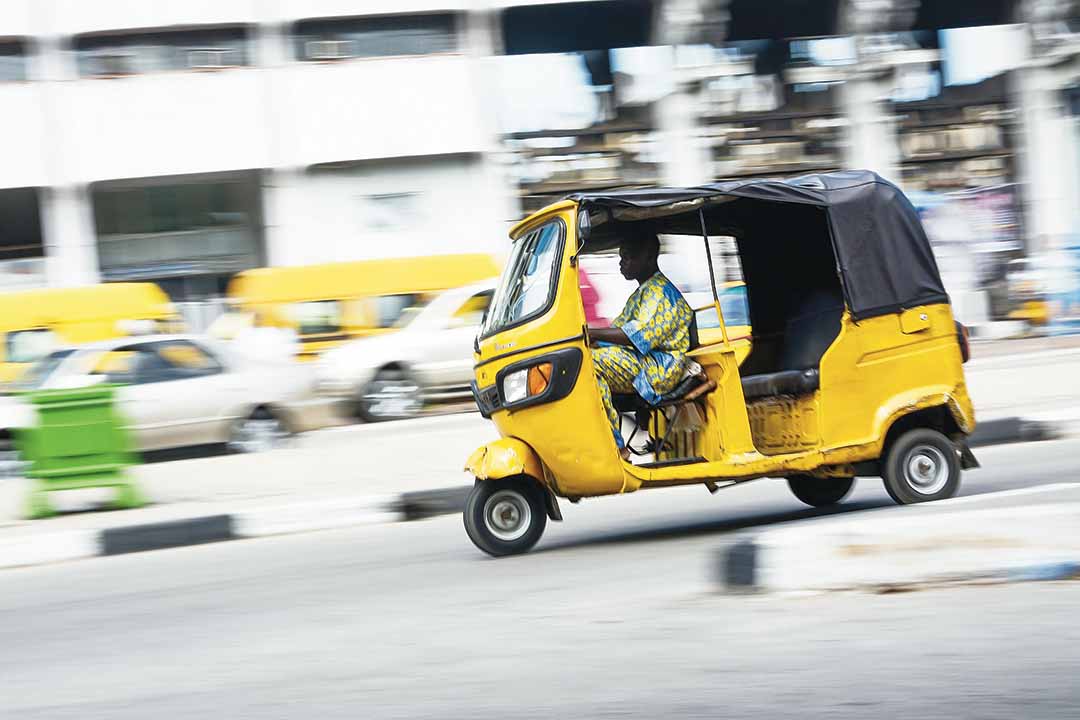
A tuk tuk driver in Lagos Photo: Olasunkanmi Ariyo
Introduction
Commuting between mainland Lagos and the central business districts on the island remains a lot more onerous than it should. Long delays on the Third Mainland Bridge during peak periods (what Lagosians refer to as the “rush hours”) is both time and energy consuming. This constitutes a major drain on productivity while hindering the city’s strategic economic role. Slow mobility ranks alongside power shortages as a key structural constraint to Lagos’s competitiveness. Implementing creative ideas to optimise existing transport infrastructure will help. The Third Mainland Bridge especially requires urgent planning interventions to unblock what is arguably the most important transportation artery in Nigeria’s commercial capital.
This will bring relief to motorists even as city planners work on devising more long-term solutions. As the urban conglomeration that accounts for a full quarter of Nigeria’s economic output – and Africa’s first genuine contender for the status of a megacity – Lagos must think boldly and tweak more at the edges. Otherwise its longer-term sustainability and bid to consolidate itself as Nigeria’s economic engine will hang precipitously in the balance. A dysfunctional transport system with worsening mobility will have knock-on effects, likely hobbling Nigeria’s potential to drive integration and prosperity.
Tasking commute
A system of scheduled lane switches on the Third Mainland Bridge will help to expand capacity for travellers to Lagos’s islands in the mornings and commuters bound for the mainland in the afternoon. The following are proposals around lane optimisation on the bridge, which could significantly expand capacity for accommodating Lagos’s growing vehicular traffic. This author draws on his own anecdotal experience of early morning commutes on the bridge from the island side in Ikoyi to Ikeja on the mainland, a route he plies about four to six times each month. From about 4am to 8am on work days, island-bound commuters using the bridge contend with steady traffic build-up, which slows to a crawl at around 7am. During the afternoon peak hours, usually from 4pm to 8pm, the direction of the pile up is reversed. Workers leaving the island for their homes on the mainland contend with hours-long traffic delays.
On most working days, an observer entering the bridge at about 7am from the Ikoyi/Osborne ramp towards the mainland will notice the build-up of traffic on the four lanes coming towards the island. This usually tails back several kilometres, sometimes snaking unbroken all the way to the Oworonshoki entry to the bridge on the mainland end. A commuter travelling in the opposite direction towards Oworonshoki at this time might struggle to count up to 100 vehicles plying the entire four lanes. It should normally take about 10-15 minutes to travel the 11.8 km length of the bridge from Osborne to Oworonshoki, but commuters travelling this distance at peak periods sometimes need as much as one to two hours. This raises important questions about how a dynamic lane-switch and expanding system could help improve mobility via co-opting excess lane capacity on the opposite side of congested traffic.
Reshuffle to relieve
The whole Third Mainland Bridge needs creative rethinking. Since the bridge consists of four commuter lanes in each direction, there is a strong case for optimising peak flow through co-opting two proximate lanes from the opposite side to supplement the congested direction. This solution will see a dynamic optimisation of the 4+4 lanes, switching it to a 6+2 system when needed. It essentially requires reversing the normal direction of flow on two lanes on the other side (that is, the two closest to the congested side of the bridge). Some traffic can thus be diverted to the other side to supplement capacity. The two makeshift lanes will add to capacity by forming six lanes, thus freeing up the vehicular flow. The two lanes left on the lighter traffic side will still be sufficient for travellers heading in that direction.
Piloting scheduled lane shifts during peak period promises an exciting template that could be applied elsewhere in the city. The process should operate only on work days (Monday to Friday) with a coordinated arrangement in place to smoothly reverse the flow: six lanes will convey traffic towards the island from 7am-10am and six lanes will be open to vehicular flow towards the mainland from 4pm to 8pm.
Emulate trendsetters
The importance of good proactive management of dynamically switching lane systems along major commuter arteries cannot be over-emphasised. The devil is in the detail. Many world cities already implement similar approaches based on capacity expansion and constriction in each direction as needed. That has kept commuter cities from Cape Town through to Los Angeles and Tokyo ticking through peak traffic hours. Since the opening of the Third Mainland Bridge in the 1980s, the rapid expansion in the number of vehicles has not seen a corresponding expansion of road infrastructure. Under-capacity of the bridge relative to vehicular traffic growth is therefore one consequence.
Other measures, such as prohibiting some vehicles from plying congested routes on specific days or during specific hours, are more draconian than the capacity-switch system proposed here. Lane switching can alleviate the perennial hardship faced by motorists pending the actualisation of Lagos’s plan to build a 38 km Fourth Mainland Bridge. However, at the core of getting this right – like every public-administration issue in Nigeria – will be good governance of the system. This will require advance publicity, effective commuter education, adequate signage along the entire route, redesign of exit lanes and all other such measures required to create a well-functioning, dynamic and easily understood traffic optimisation system on the bridge.
Piloting this system could allow for another big transformation in Lagos’s traffic management: the creation of a small but uniformed corps to monitor motorists’ adherence to the temporary lane-partition system. This will help deter some of the notorious habits that slow down traffic on the bridge, especially the hundreds of slow-moving vehicles that stay in the fast lanes and obstruct faster moving vehicles. Poor education of motorists over the years, and a general lack of awareness of the drawbacks, has led to “lane-hugging” contributing probably as much as 30% of the traffic build-up, with increasing vehicular entry onto the bridge inevitably slowing down finally to a crawl. The bridge corps will also need to oversee a robustly implemented network of makeshift lanes marked by cones placed at one metre intervals. This will safely partition the two directions of travel. The cones will come into place an hour before the start of the lane expansion at peak-periods in either direction.
A bridge safety corps
While the bridge is a federal road, piloting a state traffic monitoring corps there could help lay the foundation for a dedicated bridge and highway corps. It could gradually grow into a specially trained unit within the Lagos State Transport Management Agency (LASTMA). Diligent planning and a smooth roll-out will be important to maximise benefits and mitigate potential risks in the system. A careful spatial redesign at specific points is needed to facilitate entry and exit onto the convertible two lanes on the proximate side of peak traffic. This redesign requires some investment but the likely gains for commuters will justify the expenditure.
Even as the fine points of the design and implementation are worked out, extensive precautionary measures will need to be in place to guarantee safety and achieve the intended goal. First, clear signage should be erected well in advance. The bridge corps officers must also be stationed at the entry and exit to the makeshift lanes. They will display information on placards reminding motorists of possible exits if using the two extra lanes.
Second, core components of the system should be carefully piloted before the actual roll-out. One possibility is to dedicate the two extra lanes during the mornings to only those motorists exiting at the Osborne and other ramps further into the island. Another option is to allocate one of the makeshift lanes for the exclusive use of commercial passenger vehicles, which is probably viable given the general shift to longer routing with fewer stops by commercial passenger vehicles.
Third, Lagos is notorious for the large number of motorists (particularly the commercial operators) who ignore road signs, routinely endangering the safety of other road users. Oversight systems and physical barriers will therefore be needed to compel all drivers, for example those needing to exit the bridge earlier at points such as the Oyingbo/Adekunle ramp, to opt for the normal four lanes from their point of entry onto the bridge. Continuing public education and clear and adequate signage throughout the route will guarantee public trust and buy-in for this dynamic-lanes system.
In the longer term, solutions focused on spatial reordering in Lagos will complement short-term tinkering of traffic lanes on the Third Mainland Bridge. In particular, creating safe and well-maintained business clusters and parks in strategic axes on the mainland will help to reduce workers’ commute through congested traffic. Even as city planners pilot such redesign and structural solutions, Lagos stands to derive immediate and sizeable efficiency benefits from switching the existing bridge lanes to aid decongestion at peak traffic hours.
Policy recommendations
- The Lagos state government needs to explore bolder innovations in traffic management, including the redesign of lanes along major commuter routes and arteries to optimise carrying capacities, even as planners work on longer-term solutions.
- Lagos should leverage the dynamic-routing experience of commuter cities such as Tokyo and Los Angeles. A scheduled switching of the eight-lane, Third Mainland Bridge to form a 6+2 lane system during peak traffic will help optimise flow and expand the bridge’s carrying capacity. This should partially alleviate morning and afternoon traffic congestion.
- More calibrated infrastructure investment is needed in Lagos. An explicit bias towards boosting commercial property development, security and business-enabling amenities on mainland Lagos is needed. Businesses should be incentivised to relocate from the island business districts to modern business parks situated close to working-class neighbourhoods on the mainland.
- In a next step, a holistic spatial redesign of the city should be pursued within a new city masterplan that gives careful thought to decongestion, commuting, and access to services and infrastructure on a more inclusive, sustainable basis. This will create a better urban experience and deliver efficiencies in terms of integrated transportation, housing and commercial zoning.
- A bridge corps should also be created to police makeshift lanes demarcated by cones placed at intervals, better to guarantee partition of the travel directions.
Oladiran (Ola) Bello obtained both his MPhil and PhD degrees in International Relations from the University of Cambridge and also holds a First Class BSc degree from the Obafemi Awolowo University, Ile-Ife. He has worked for organisations including the United Nations (New York) and Management Systems International (Washington DC), Merchant International Group (London) and Arthur Andersen (later KPMG). Dr Ola Bello has more than 10 years of experience in research and policy advisory, including on governance and extractive sector reform; sustainable development; and international development cooperation (including in EU-Africa relations). He spent three years with FRIDE (Spain) managing a donor-funded programme on the EU’s role in managing fragility and resource governance in select African countries. In 2012-2015, he was Head, Governance of Africa’s Resource Programme (GARP) at the South African Institute of International Affairs (SAIIA) and also functioned as head of SAIIA’s Cape Town office. Ola is spearheading GGA's technical support to Nigerian reform, including delivering ethics training for senior Nigerian judicial officers and change-makers (2017-2019). He's also working to expand GGA's role as in-country resource centre for multilateral consultative missions to Nigeria's ministries and parastatals. These missions include the UNECA/AU mineral sector governance team.

